Diario de Bordo (Logbook)
House of Combustion
Bedroom/Studio
06.11.25

Oil, acrylic, mica and dew drying among earlier compositions.
A topography of silence and slow respiration.
Residue as witness; evaporation as ritual.
Queer Geometry: Method of Metamorphosis
In the sequence titled House of Combustion, the artist continues to investigate painting as a living membrane — a field of chemical, energetic and cosmological exchange.
The works presented here — Queer Geometry as Cosmological Method — originate in the most intimate room of the house, the bedroom-studio, where sleep, heat, humidity and pigment intertwine.
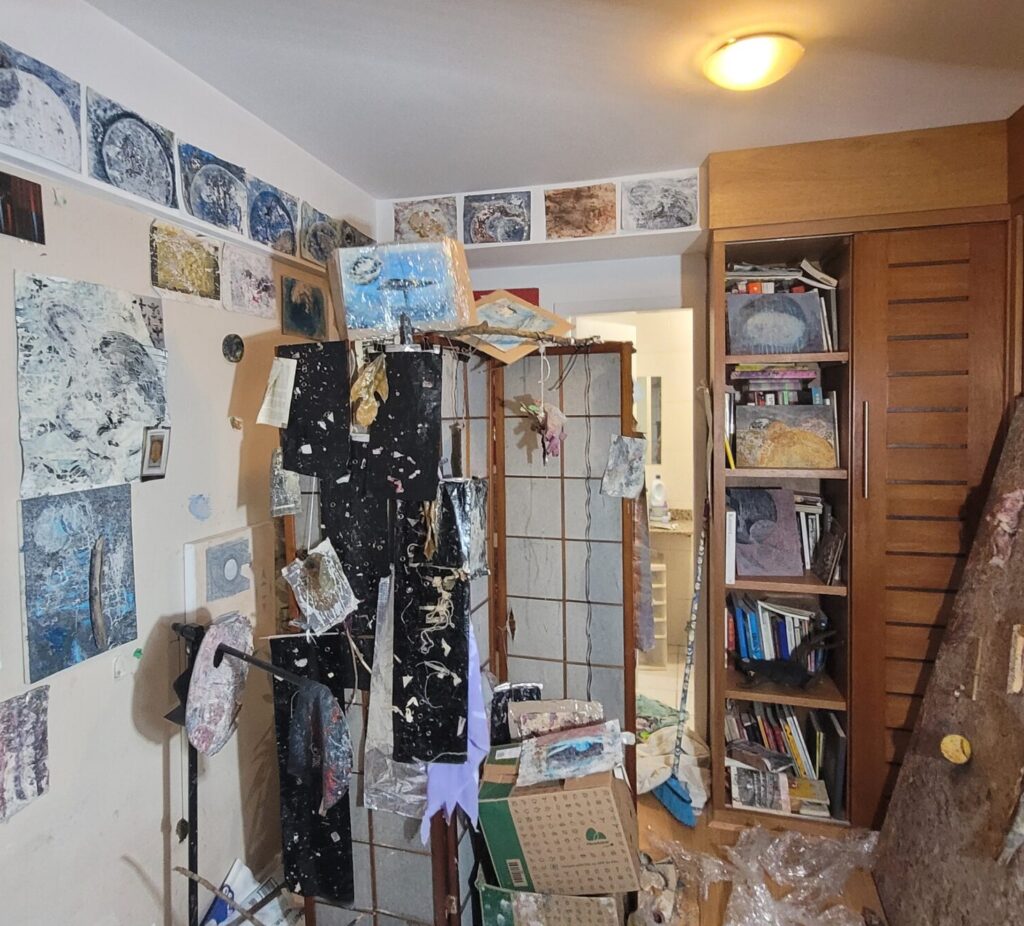


The series unfolds as a pedagogy of metamorphosis: a learning process not transmitted through discourse but through matter itself. Pigment teaches decay; mica teaches reflection; cocoa recalls the earth’s memory.
Here, geometry is not a system of measurement but a cosmological language — curved, porous, sympoietic.
They began as residue — the aftermath of earlier gestures drying on the studio floor.
Yet residue became revelation.
Through their textured skin, the artist realized that teaching could be thrilling and that abstraction could come alive.
Recent solid painted/emerged from “Chaos Square” with oil, acrylics, mica, cacau and dew:
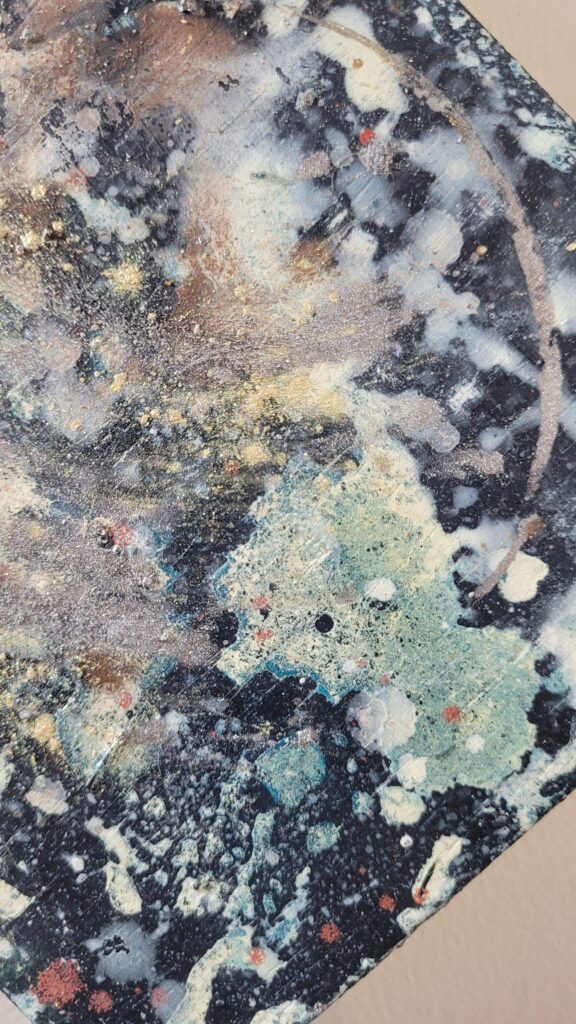
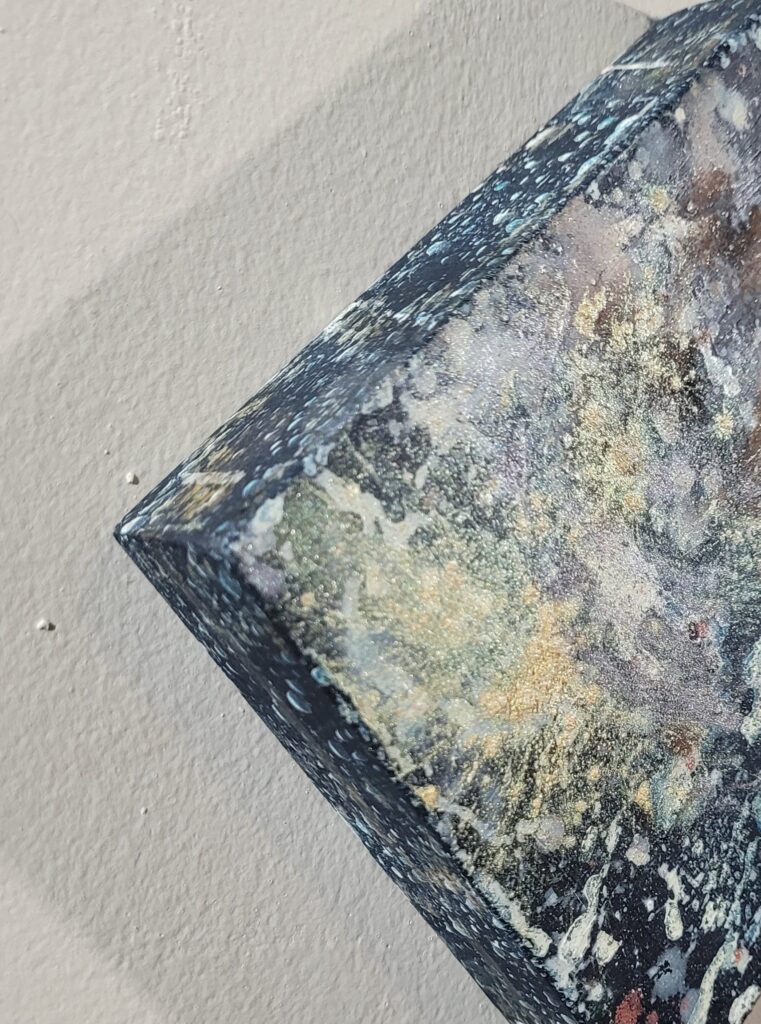
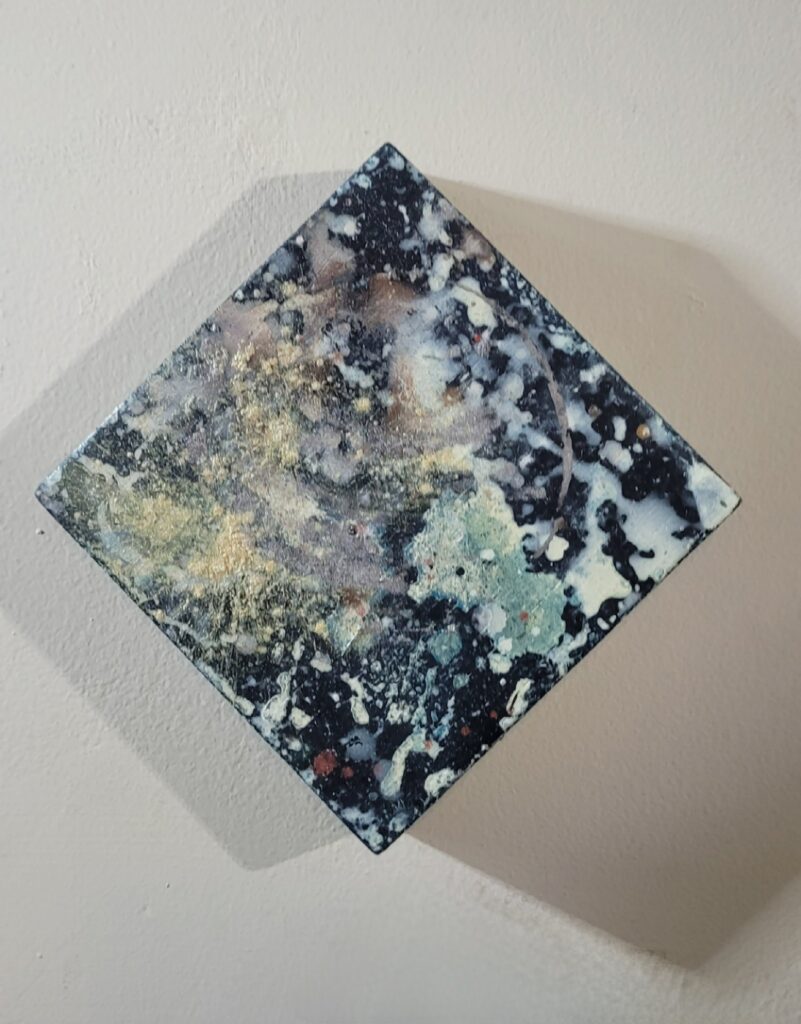
Oil, acrylic, mica, cocoa, varnish and dew on canvas
14 x 14 x 3 cm
2025
The surface glows from within,
refracting its own history of humidity.
The mineral becomes celestial; pigment remembers breath.
It begins in the collective body and culminates in the mineral one. It is a practice of queer geometry — a refusal of straight lines, a devotion to folds.
It shows that abstraction can be sensual, that teaching can be captivating, and that the remnants of art are not waste but testimony.
And in the quiet shimmer of mica, one hears again the echo of the first explosion — not of fire, but of life remembering itself.
From the aroma of cocoa, a cosmic alphabet unfolds.


The serpent writes — evidence curved back upon itself. From El Greco’s spiraling heavens to fluorescent neon lights vortex and mica, cacau, oil, acrylics and dew membranes — matter is seeking ascension; light is seeking form. Unspoken geometry: an orbit between the earthly and the immaterial.

Another membrane, the one was drying up among others in the Bedroom Veranda:

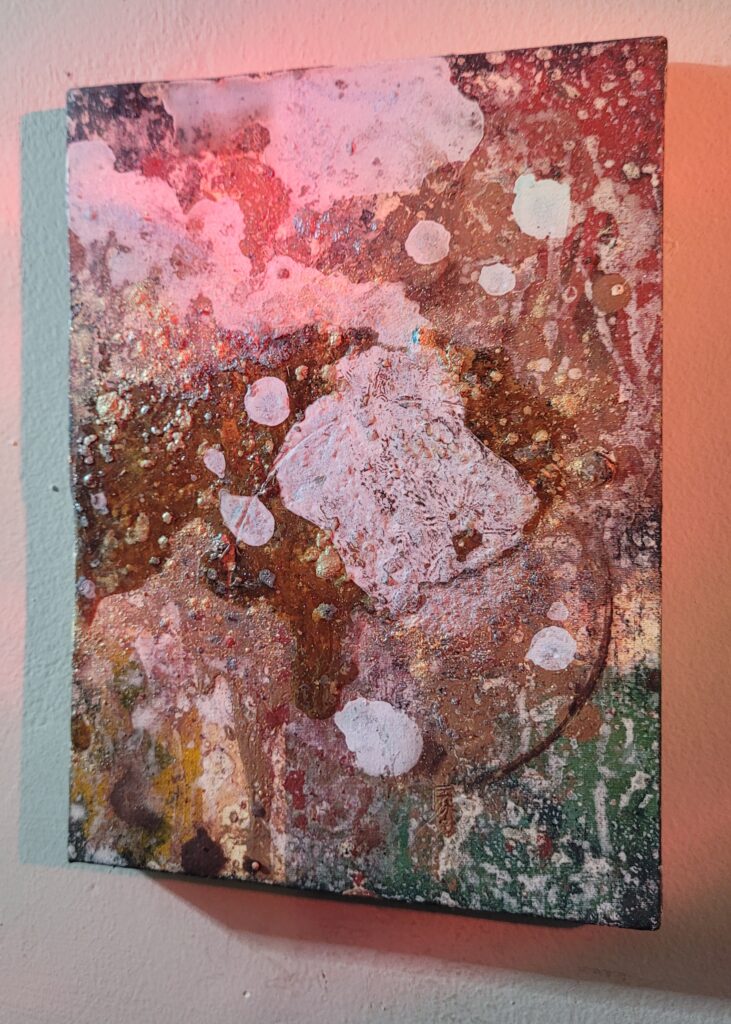

(Sleeping Membranes Series)
Oil, acrylic, mica, cocoa, toothpaste, amber varnish and dew on canvas
22 x 16 cm
2025
Under different chromatic atmospheres — daylight, violet, red — the paintings shift identity, like asteroids reflecting new suns.
What emerges is a queer geometry, one that refuses the tyranny of straight lines.
It bends toward the fold, toward moisture, toward the unconscious topography of mineral birth. Each painting, a site of exhalation — oil, acrylic, mica, cocoa and toothpaste binding into a planet’s crust.
Each surface, a cartography of memory and oxidation.
In these small canvases — incubated under lamps and filtered light — one perceives the shimmer of a cosmological alphabet: spirals, traces, luminous eruptions.
They recall El Greco’s twisting heavens, Tropicalia’s electric syncretism, and the microscopic physics of condensation.
Through this practice, painting ceases to be a static object and becomes a pedagogical event, a classroom of matter in mutation. The artist learns from decay, as the serpent learns from its own skin.



in a DJ Remix by Pedro Sampaio
The digital remix of “Odara” reawakens the utopian, cannibalistic spirit of the Tropicália movement, now translated into the spectrum of LED light. It is not nostalgia, but reanimation — an act of techno-anthropophagy where the screen absorbs and radiates ancestral frequencies.
On the screen, Pedro Sampaio and Caetano Veloso inhabit a double image:
one young, one eternal,
a dialogue between rhythm and myth,
between LED light and divine nostalgia.
The remix becomes ritual: the rebirth of Tropicália as queer technoculture,
its pulse extending through colour gradients and glitch auroras.
Technicolour LED panels function as contemporary altars.
The historical pulse of Tropicália mutates into queer technoculture —
a neon liturgy of rhythm, memory, and ancestral code.
Theoretical Notes
Pedagogy of Metamorphosis
In this context, pedagogy is not instruction but transformation — the process through which matter teaches by changing state.
It is an auto-didactic cosmology, where learning occurs through entropy and renewal.
Queer Geometry
A geometry without axis or hierarchy, founded on deviation.
The queer line folds back upon itself, generating new coordinates for desire, colour, and relational knowledge.
In this sense, painting operates as a diagram of transition, a grammar of the physical world.
Statement
The Bedroom Studio functions as both laboratory and temple.
Between the tiled floor and the screen glow, between pigment and pixel, the artist performs acts of alchemical devotion.
The result is neither painting nor performance, but an interface between cosmology and pedagogy — a living archive of transformation.
The shimmering particles of mica act as mnemonic dust: each flake a fossil of light, each stain a future constellation.
Through them, the artist teaches us that to create is also to decompose, that every geometry carries the memory of a former explosion, and that every residue is an invitation to begin again.
Echoes
From El Greco’s spiraling heavens to the technicolour vortex of electronic LED altars,
from dew membranes drying on the studio floor
to mica constellations blooming on small canvases —
matter seeks ascension, light seeks form.
This is the pedagogy of transformation: a devotion to decay, a dance of change between the earthly and the celestial, between the lush sensuality of tropical life and the structured elegance of galaxies.
Cosmological Method
Several canvases rest face down upon the tiled floor — drying, fermenting, exhaling vapor.
The room is thick with the scent of earth and pigment.
What appears as residue is, in fact, respiration —
the organic aftermath of painting as living fermentation.
New paintings emerge from the Square of Chaos —
oil, acrylic, mica, cocoa, and dew interlaced.
Under different lights (morning, violet, sunset red),
they become oracular stones:
each surface a meteorite between states of matter.
Now dry, the once-raw canvas stands upright, crystalline,
its golden dust captured by the camera lens.
It has become a planet —
not orbiting but glowing from within.
Pigment and light coexist as if remembering the same dream.
Reflections
To teach geometry as metamorphosis
is to let the cosmos fold into pedagogy.
These works refuse rectilinear reason; they spiral, oscillate, sweat.
They whisper that every formula can also be a caress,
that to know is to dissolve,
that colour, too, has a memory of the body.
Between painting and remix,
between Odara and Chaos,
a pedagogy emerges — not academic but elemental.
A queer geometry of light and residue,
a curriculum written by the serpent in mica.
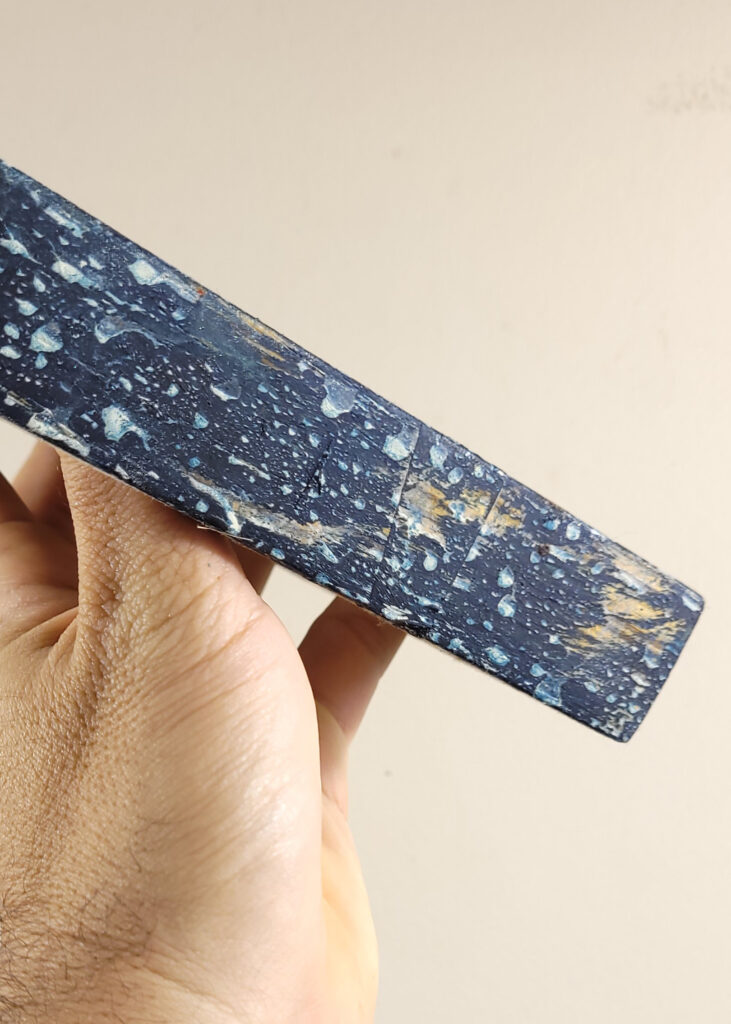
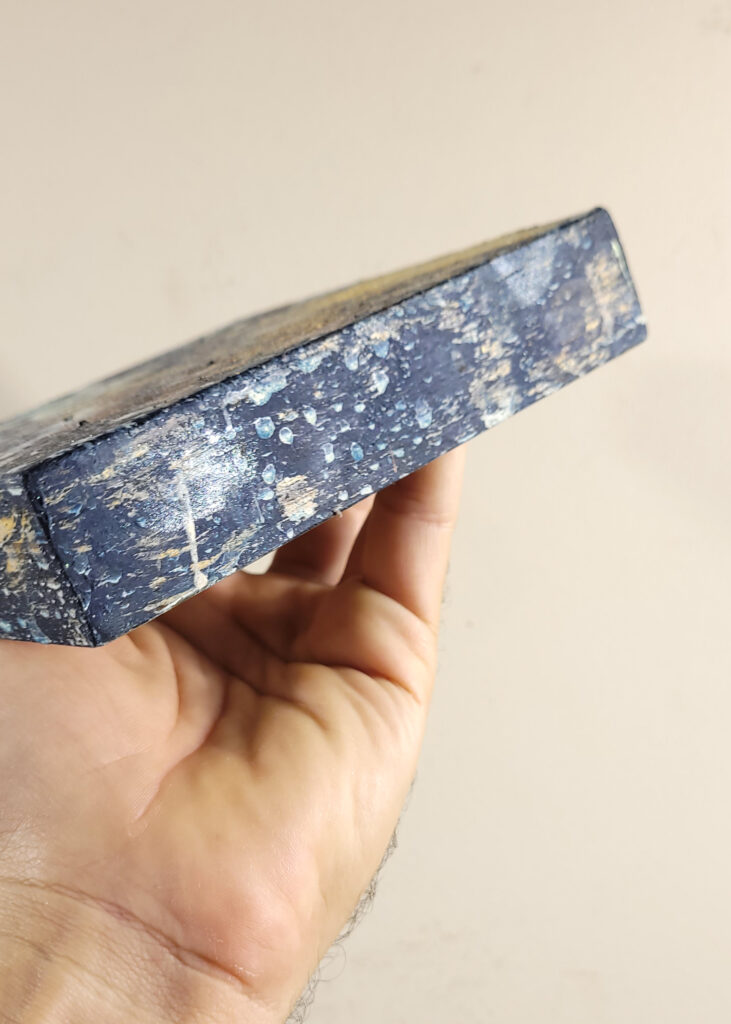
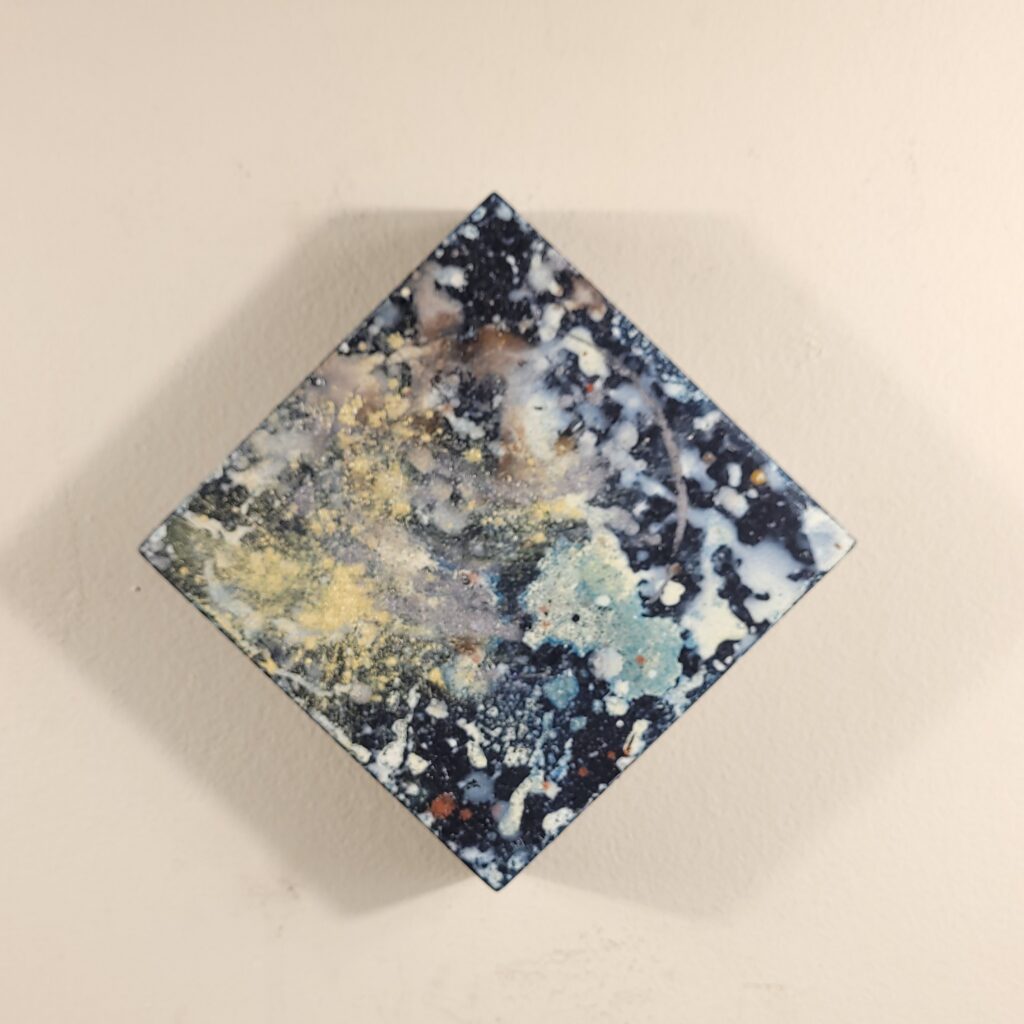
Oil, acrylic, mica, cocoa, varnish and dew on canvas
14 x 14 x 3 cm
2025
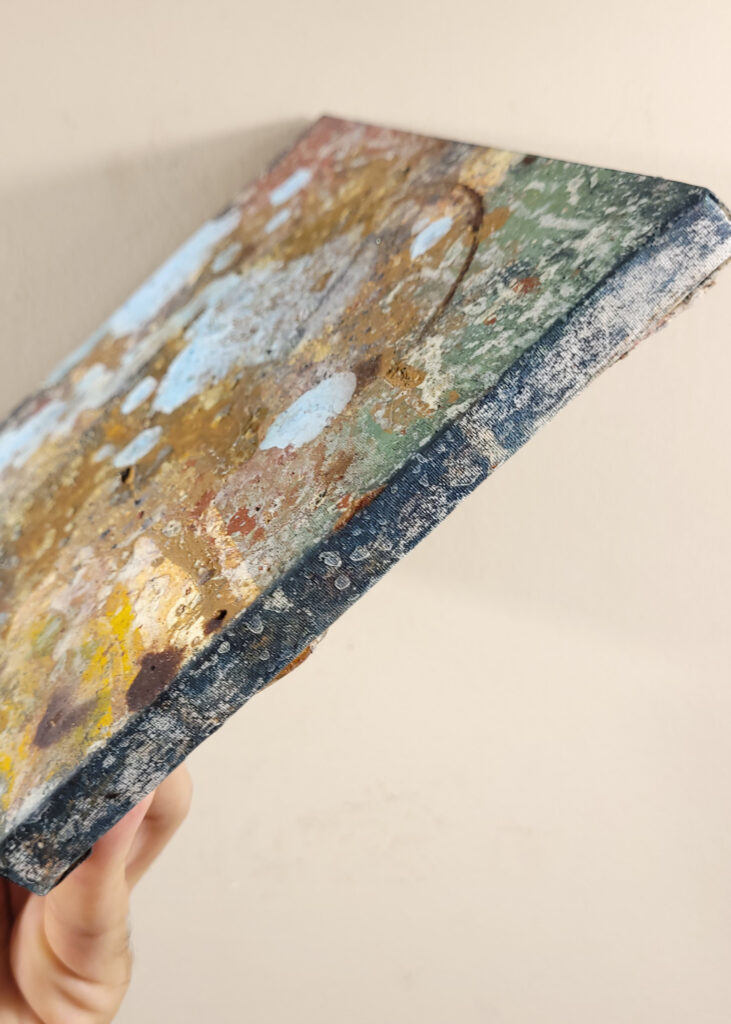
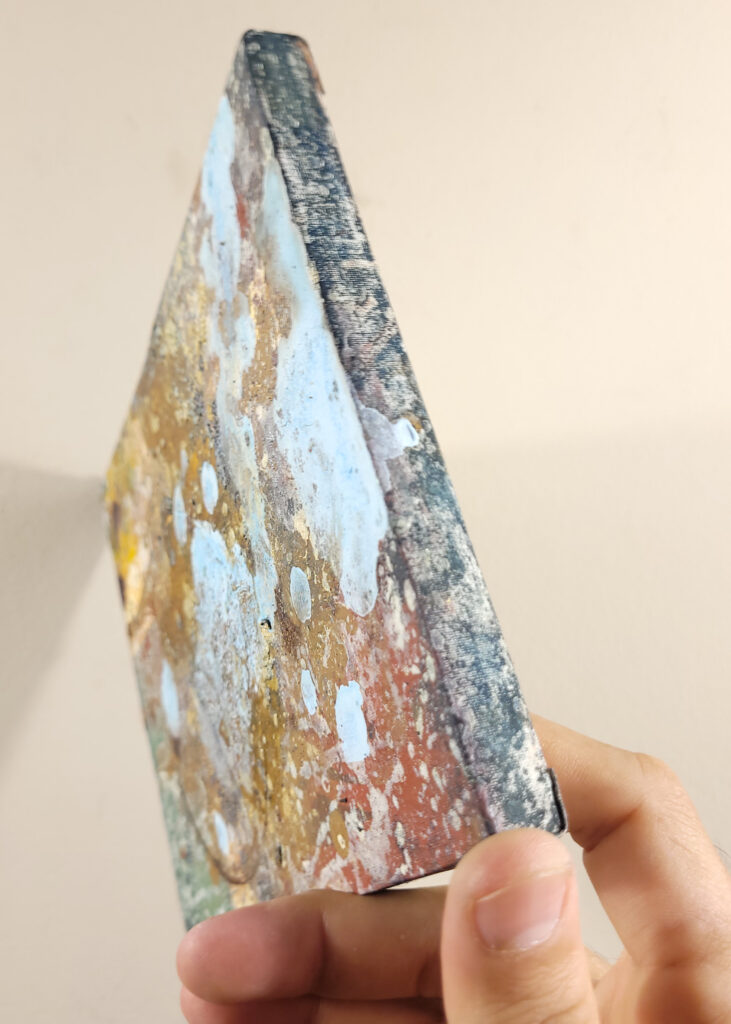



(Sleeping Membranes Series)
Oil, acrylic, mica, cocoa, toothpaste, amber varnish and dew on canvas
22 x 16 cm
2025
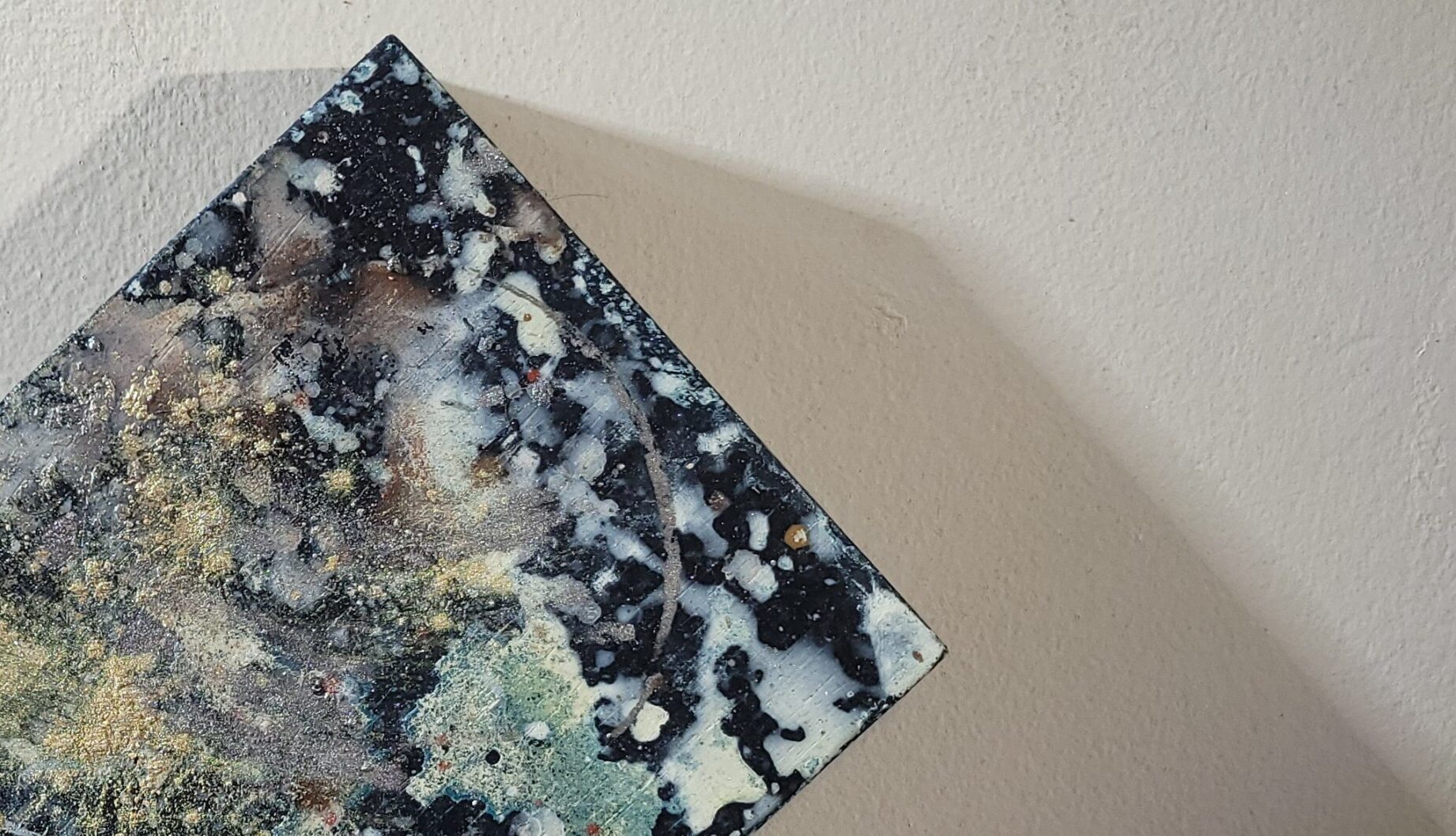
Deixe um comentário